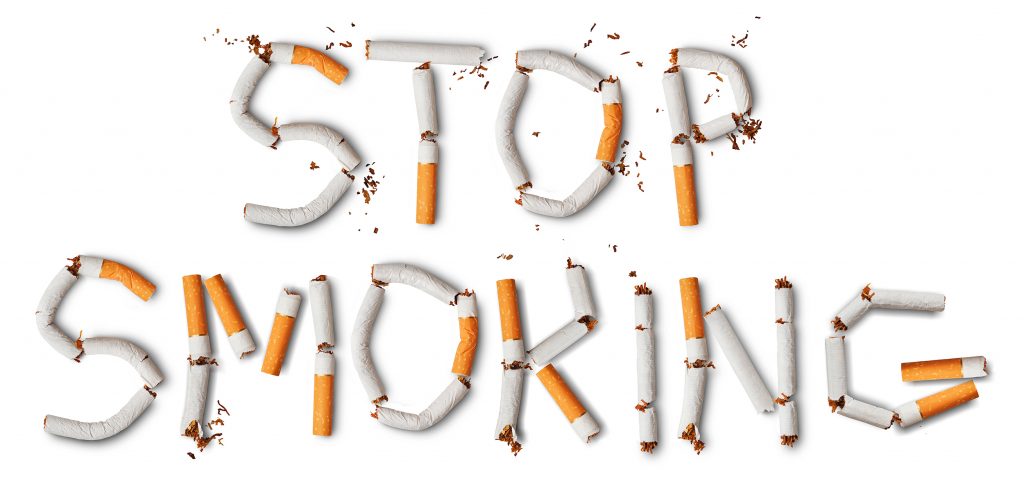
Smoking seriously damages the health of people who smoke.
If you want to improve your health and that of those around you, quitting smoking is the best decision you can make.
Quitting smoking decreases the risk of premature death. People who quit smoking live an average of 10 more years compared to those who continue to smoke.
A former smoker reduces the risk of suffering cardiovascular disease 50%, compared to that seen in people who smoke. Between 5 and 15 years of age, the risk of stroke is the same as for non-smokers.
The risk of cancer and respiratory diseases also starts to decrease as soon as you stop smoking:
After 5 years of tobacco withdrawal, the risk of cancer of the mouth and esophagus decreases by 50% and continues to decrease thereafter.
After 10 years, the risk of lung cancer decreases by 50% from that seen in smokers. The risk of cancer in other locations is also decreasing.
The risk of many of the diseases associated with tobacco increases with years of use. Like this, to quit smoking as early as possible, is dramatically reducing the risk of having these diseases.
Several studies show that average life expectancy decreases by about 10 years in smokers compared to non-smokers. Yet, smokers who quit before 30-34 years, recover the years of life potentially lost due to tobacco, significantly decreasing the risk of premature death. Even when you quit smoking at the age of 60, you can still recover about 3 years of life expectancy.
Quitting smoking has immediate and medium to long term benefits, not only for the person, but also for those who live with him, such as:
For young people the first benefit of quitting is to avoid tobacco dependence, because the sooner a young person quits smoking, the less likely they are to smoke in adulthood. Teenagers who smoke are more likely to consume alcohol and other illegal substances.
Young people who decide to quit smoking:
If you are pregnant, quitting smoking has benefits not only for you, but also for your baby:
Some people stop smoking without great difficulty, never developing symptoms of addiction. However, quitting smoking is not an easy task for most smokers. The addicted smoker will have to deal with the withdrawal symptoms that the absence of tobacco causes. As if that were not enough, you will still have to learn to deal with the desire to smoke triggered by multiple contexts or everyday social situations.
Most people who smoke are well aware of what they feel when they are longer than usual without smoking. THE nicotine, the main addiction-inducing substance in cigarettes, affects several organs and systems, in particular the brain receptors associated with the reward system. When you stop smoking, the smoker's brain and entire organism has to adjust to the absence of nicotine. Withdrawal symptoms are signs that the body is adapting to the lack of tobacco. This phase of adaptation to the absence of tobacco can be unpleasant and difficult to endure without support. At this stage, many smokers trying to quit relapse.
Withdrawal symptoms:
For most people, the worst symptoms last only a few days or a few weeks, but the craving for a cigarette can last longer. This desire is triggered by stimuli such as remembering tobacco, seeing tobacco packaging or people smoking.
Although these symptoms can be unpleasant, a lack of tobacco and withdrawal symptoms are not dangerous to your health.
Only 3% to 5% of smokers who quit without help continue to quit smoking a year after quitting.
If you have come this far, it is because you are really interested in quitting smoking and if so, I have good news for you.
With the method of quitting smoking by Dr. Rui Pedro Loureiro you can easily and effectively start your new tobacco-free life that you so desire.
Inspired by Chinese Medicine, Dr. Rui Loureiro's method is based on electro acupuncture and uses light electrical stimulation at specific points in the ear to help you quit smoking in a simple and quick way.
The treatment is carried out in a maximum of 30 minutes and with an efficacy rate of 87-90% with only one session.
On average, 9 out of 10 patients quit smoking with this method in one session.
Dr. Rui Pedro is invited worldwide to hold several health and wellness retreats, many of them with the aim of helping to stop smoking.
Hundreds of people around the world already benefit from a new life without tobacco, you can be next.

It's that time of year again — time to make a list of New Year's resolutions. Unfortunately, those goals tend to fall off the radar and, eventually, disappear.

Anantara Phuket has partnered with acupuncturist and TCM practitioner, Dr Rui Pedro Loureiro to run wellness workshops, from 29 December 2019 until 18 January 2020.